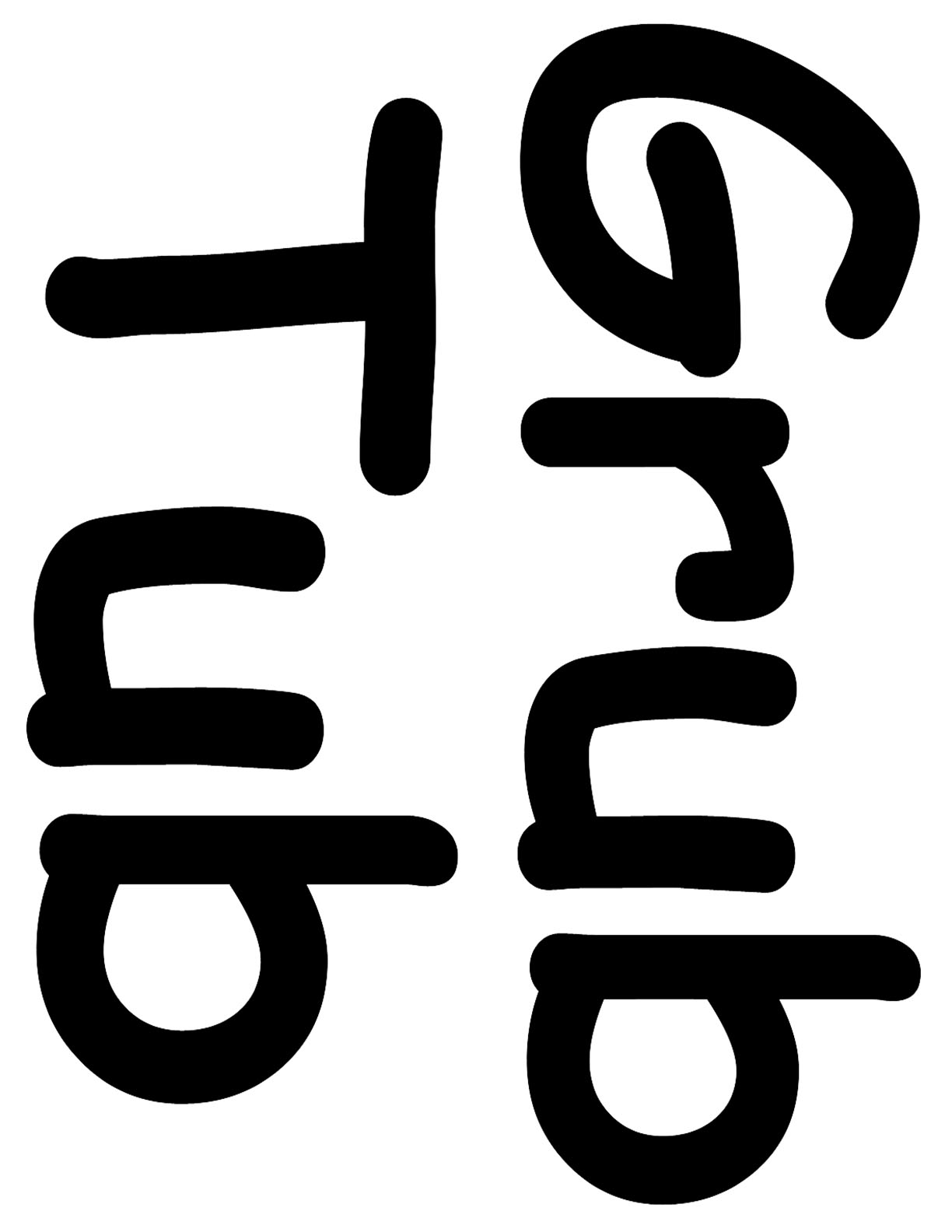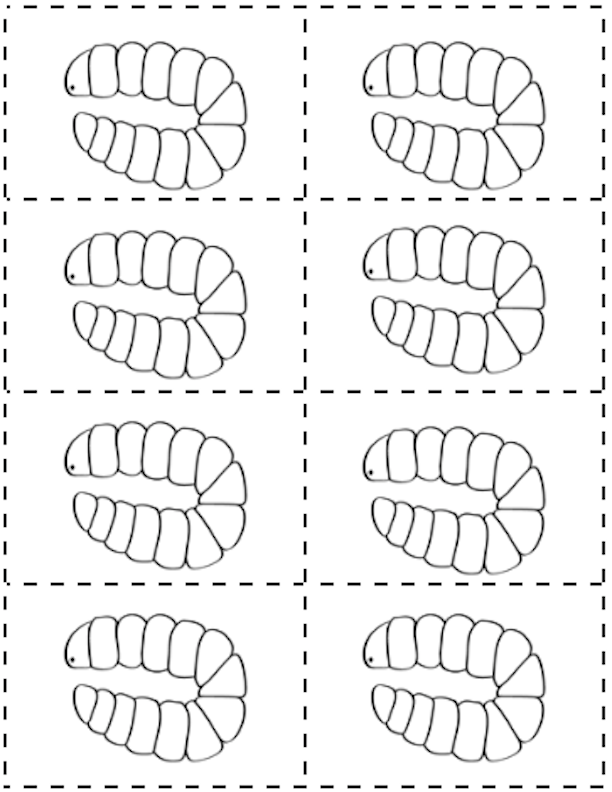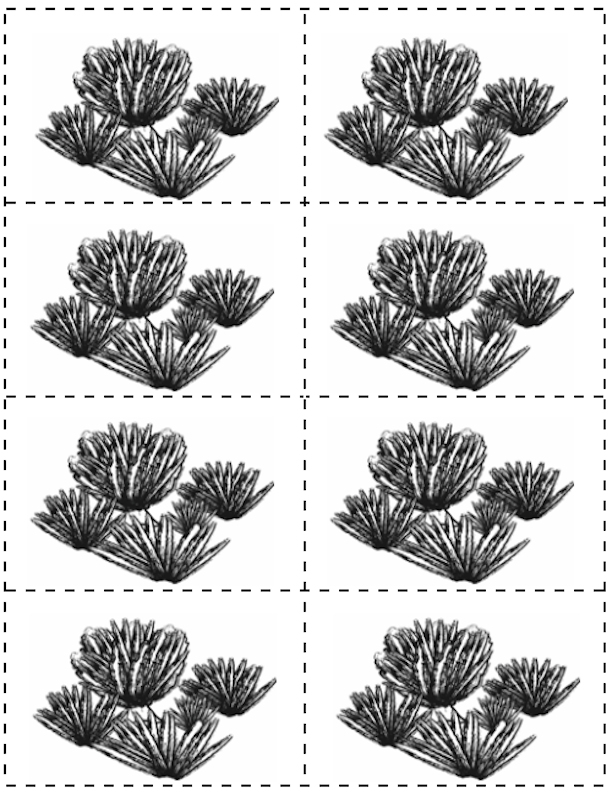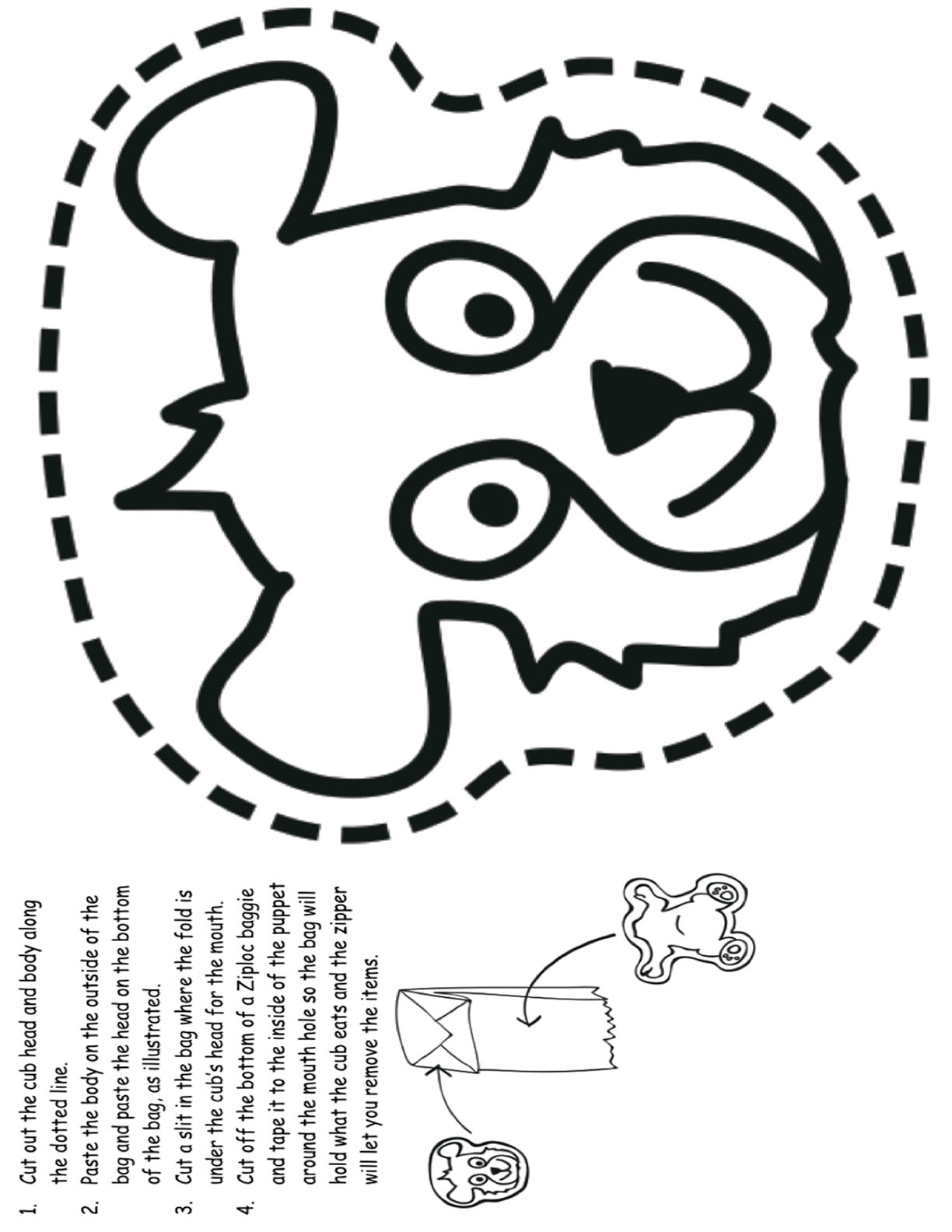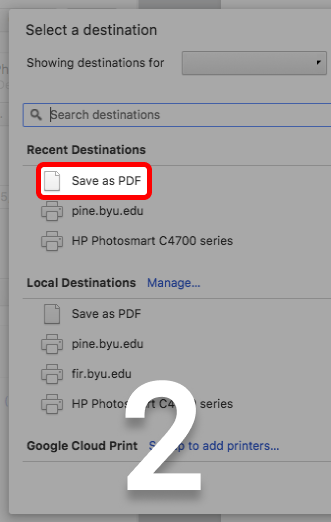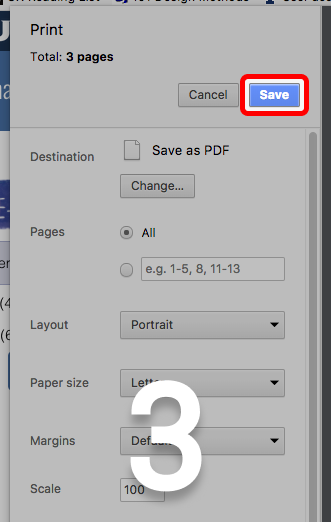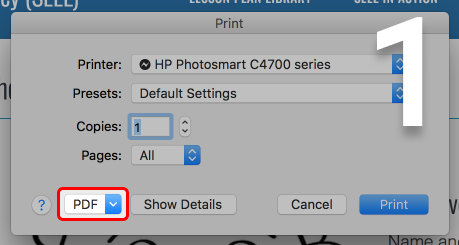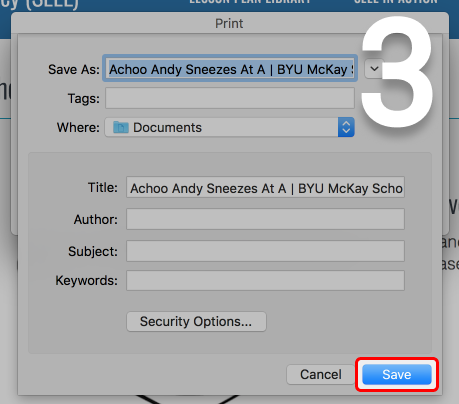Grub Cub
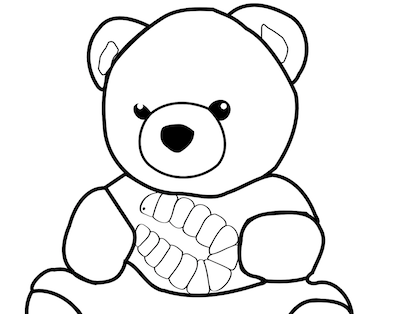
Objective
Recognize words that rhyme with grub (e.g., "Do grub and cub rhyme?") and produce rhyme words (e.g., "Think of a word that rhymes with grub.").
Lesson Plan
Target Words:
- grub
- shrub
- cub
- tub
Materials:
- Tape
- Shrub picture cards (see below)
- Grub picture cards (see below)
- Cub sack puppet graphic (see below)
- Ziplock bag
- Paper lunch sack (attach the ziplock bag to the inside)
- Container labeled "Grub Tub" (i.e., cardboard box, bowl) - see below for label
State and model the objective
Tell the children that they will search for grub to feed a cub and hear and say words that rhyme with grub (such as shrub, cub, and tub).
Practice the skill within an activity
Grub Cub
- Tape a grub picture card (see below) on the back of each shrub picture card (see below) and hide them around the room, with the shrub side up.
- Assemble the cub sack puppet (see graphic below) and introduce the puppet as a cub (another name for a baby bear) who likes to eat grubs.
- Explain to the children that a grub is a type of bug that bears eat and that it can be found in the ground under a shrub or bush.
- Have the children search the room and chant, “Find a grub under a shrub!”
- Have the children place the grubs in the tub as they find them and say, “Grub in the tub!”
- Feed the grubs from the tub to the cub sack puppet and say as a class, “Give the cub a grub!"
- Ask the children to name the words used in the activity, that rhyme with grub.
Apply the skill
Practice rhyming
- Produce words that rhyme with grub
- Remind the children of the words they played with (grub, shrub, cub)
- Tell them you can think of other words that rhyme with grub (rub, tub, nub, scrub).
- Ask each child to think of a word that rhymes with grub.
- If a child doesn't respond in a few seconds, give him/her an option:
- "How about rub? Does rub rhyme with grub?" (Nod your head yes to let the child know that they rhyme)
- "Do cub and shrub rhyme?" (Nod your head yes)
- Recognize rhyming words
- Have the children repeat a set of 2 words (e.g. tub, rub).
- Ask the children to put their thumbs up if the words rhyme and thumbs down if the words do not rhyme.
- Repeat with other sets of words: (e.g., grub, shrub; tub, dog; rub, scrub; cub, cat; nub, stub; hub, ball).
- If children do not respond correctly, repeat the 2 words, emphasizing the ending sounds of the words.
Practice blending and segmenting sounds into words
- Tap sounds in words
- Have children identify the onset (beginning sound) and rime (the vowel and ending sounds) of words by tapping their head (onset) and their toes (rime) (e.g. cup = /c/ tap head, /ub/ tap toes). Point out that all of the words have the -ub sound at the end.
- cub = /c/ /ub/
- rub = /r/ /ub/
- shrub = /shr/ /ub/
- nub = /n / /ub/
- Have children identify the onset (beginning sound) and rime (the vowel and ending sounds) of words by tapping their head (onset) and their toes (rime) (e.g. cup = /c/ tap head, /ub/ tap toes). Point out that all of the words have the -ub sound at the end.
SEEL At Home
Objective
Recognize words that rhyme with grub (e.g., "Do grub and cub rhyme?") and produce rhyme words (e.g., "Think of a word that rhymes with grub.").
Materials
- Cub sack puppet (see below)
- Ziplock bag
- Paper lunch sack (attach the ziplock bag to the inside)
- Grub picture cards (see below)
Activity: Grub for Cub
- Have your child make his or her own cub by coloring the puppet (see below), cutting out his face and body and gluing the parts to a paper lunch sack.
- Hide the grub picture cards (see below) around the house and search for them with your child chanting, “Find a grub for the cub.”
- Pretend to feed the grub to the cub and chant together, “Give the cub a grub! The cub loves grubs!”
- Repeat the game as desired, taking turns hiding and finding the grub picture cards.
- With your child, think of other words that rhyme with grub and decide if they are something that the cub would or would not eat (e.g., tub, sub).


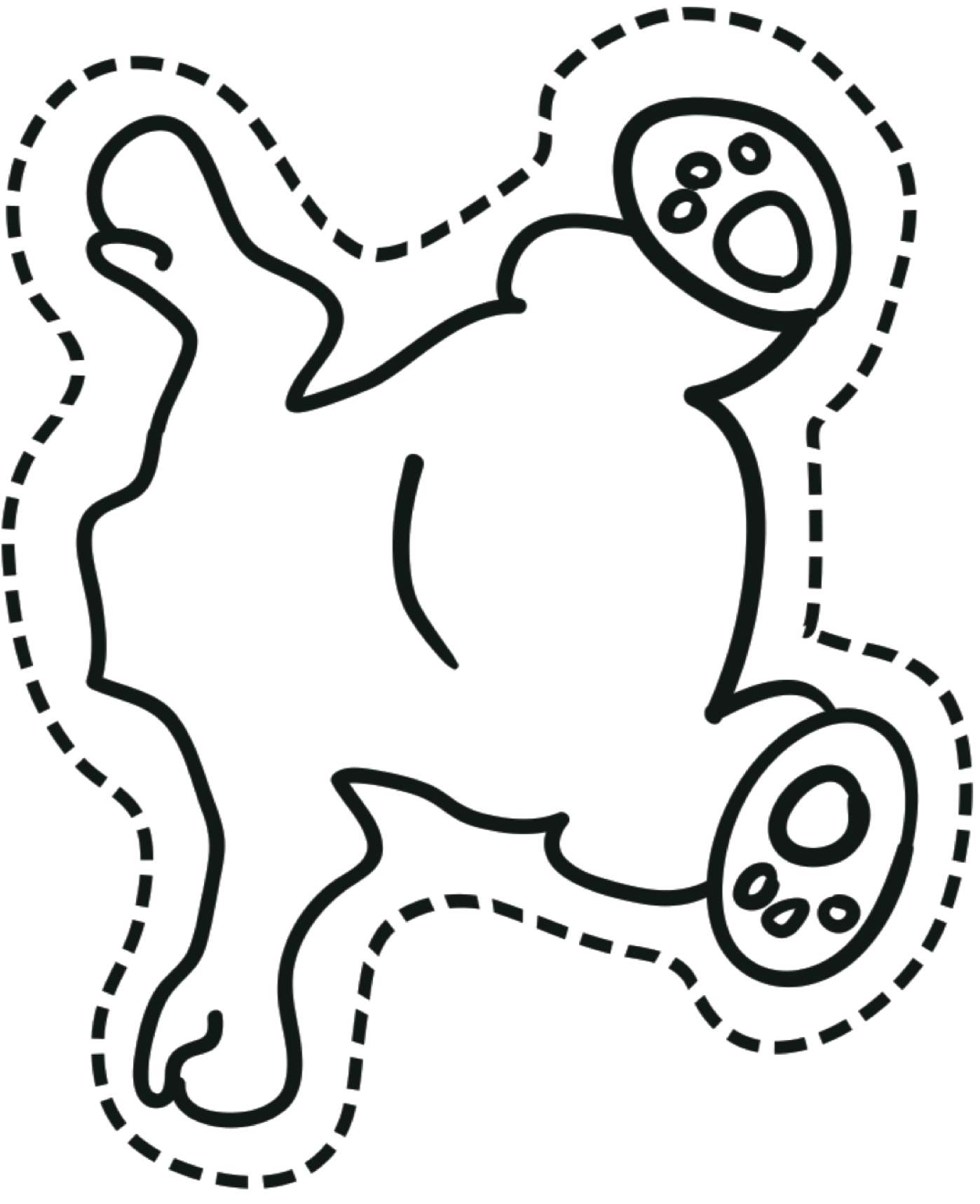
Standards
SEEL lessons align with Common Core Standards. Please see the standards page for the code(s) associated with this lesson.

http://education.byu.edu/seel/library/
129133
Grub Cub






